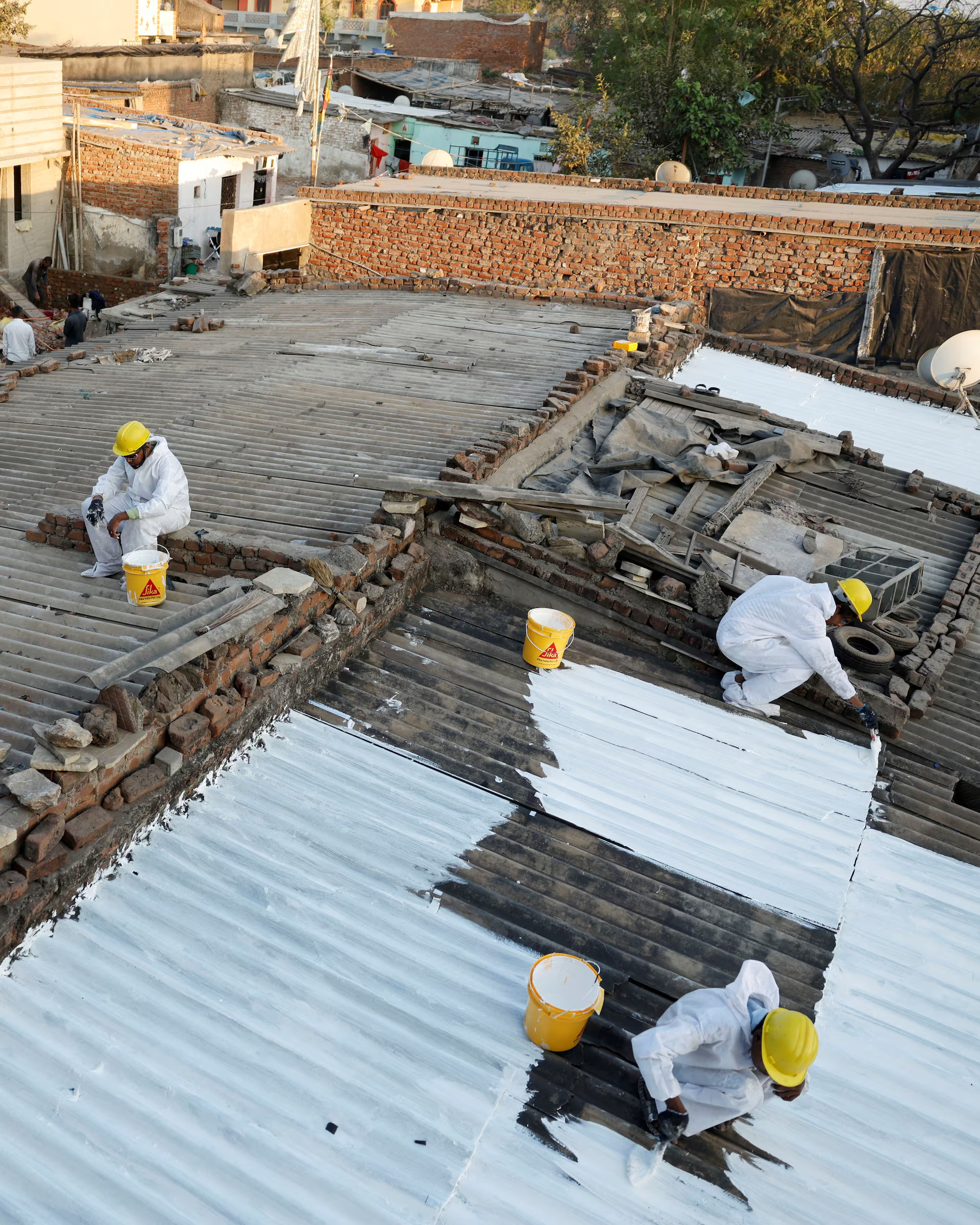Ahmedabad, like many other Indian megacities, is grappling with an intensifying urban heat problem that is only set to worsen. With rising temperatures regularly exceeding 46°C during the summer months, the city is quickly becoming a furnace under the relentless sun.
However, a groundbreaking global study suggests that a simple but effective solution – the implementation of cool and green roofs – could offer significant relief by reducing the urban heat island effect and cutting down energy consumption in buildings. The study, titled “Global investigation of pedestrian-level cooling and energy-saving potentials of green and cool roofs in 43 megacities,” has employed advanced modelling techniques to evaluate the cooling effects and energy-saving potential of cool and green roofs across various cities. The research, which will soon be published in Energy & Buildings, highlights the crucial role that Indian cities like Ahmedabad, Delhi, and Bangalore can play in mitigating the escalating urban heat and its associated challenges.
For Ahmedabad, the study found that cool roofs, which are typically coated with highly reflective materials, have impressive energy-saving potential. The cooling effect at the pedestrian level, while modest, shows a reduction of around 0.067°C, a small but meaningful improvement in urban comfort. In terms of energy savings, cool roofs in Ahmedabad can save an average of over 40 kilowatt hours per square metre per year (kWh/m²/year), positioning the city among the global leaders in this regard alongside cities like Dhaka and Bangalore. However, the real winners in the cooling race are green roofs, which not only provide better pedestrian-level cooling but also have more substantial energy-saving capabilities. The study shows that green roofs, which are typically covered with vegetation, can reduce temperatures by more than 0.1°C at the pedestrian level, with a notable increase in energy savings – averaging over 5 kWh/m²/year. At the city scale, green roofs can provide an impressive cooling effect of up to 0.80°C, with Delhi and Kolkata showing some of the most significant reductions.
Despite these promising findings, the cooling effect of cool roofs does not seem to be as impactful in high-rise buildings. The study notes that as building height increases, the effectiveness of cool roofs diminishes. In open layouts, cool roofs on buildings taller than 63.6 metres showed almost no cooling effect, and in more compact urban layouts, the threshold was around 58.1 metres. This suggests that while cool roofs can provide important benefits for low- to mid-rise buildings, their impact on high-rise structures is limited. In Ahmedabad, over 400 households have already become part of a global scientific trial aimed at understanding how indoor heat impacts health and economic outcomes, particularly in developing countries. These households are participating in a study where their roofs are being coated with white reflective paint containing pigments like titanium dioxide, which help reflect sunlight and prevent heat absorption.
The results from this trial, combined with the broader findings of the study, indicate that the widespread adoption of cool and green roofs could be a game-changer for Ahmedabad’s urban climate. While the cooling effects might seem modest on a case-by-case basis, the cumulative impact of these roofs, if scaled up, could help significantly reduce the urban heat island effect. This, in turn, could improve the quality of life for Ahmedabad’s residents by making outdoor spaces more bearable and reducing the demand for air conditioning in buildings, leading to both environmental and economic benefits.
However, the study also warns that the full potential of these technologies can only be realised if implemented alongside sustainable urban planning strategies. As Ahmedabad continues to urbanise at a rapid pace, integrating green and cool roofs into the city’s infrastructure will be crucial in combating the intensifying heat waves and ensuring a more liveable and sustainable urban environment for future generations.




